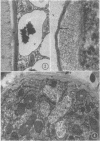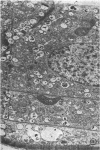Abstract
Analysis of salt secreted by the salt glands of Tamarix aphylla shows that the composition of the secreted salt is dependent on the salt composition of the root environment. Rubidium ion, if added to culture solutions in which the plants were growing, is also taken up by the plants and subsequently secreted by the glands. Electron micrographs of glands from the ribidium-secreting plants show accumulations of electron-dense material in the microvacuoles of the secretory cells. It is concluded that rubidium is accumulated in the microvacuoles and subsequently secreted by their fusion with the plasmalemma.
Full text
PDF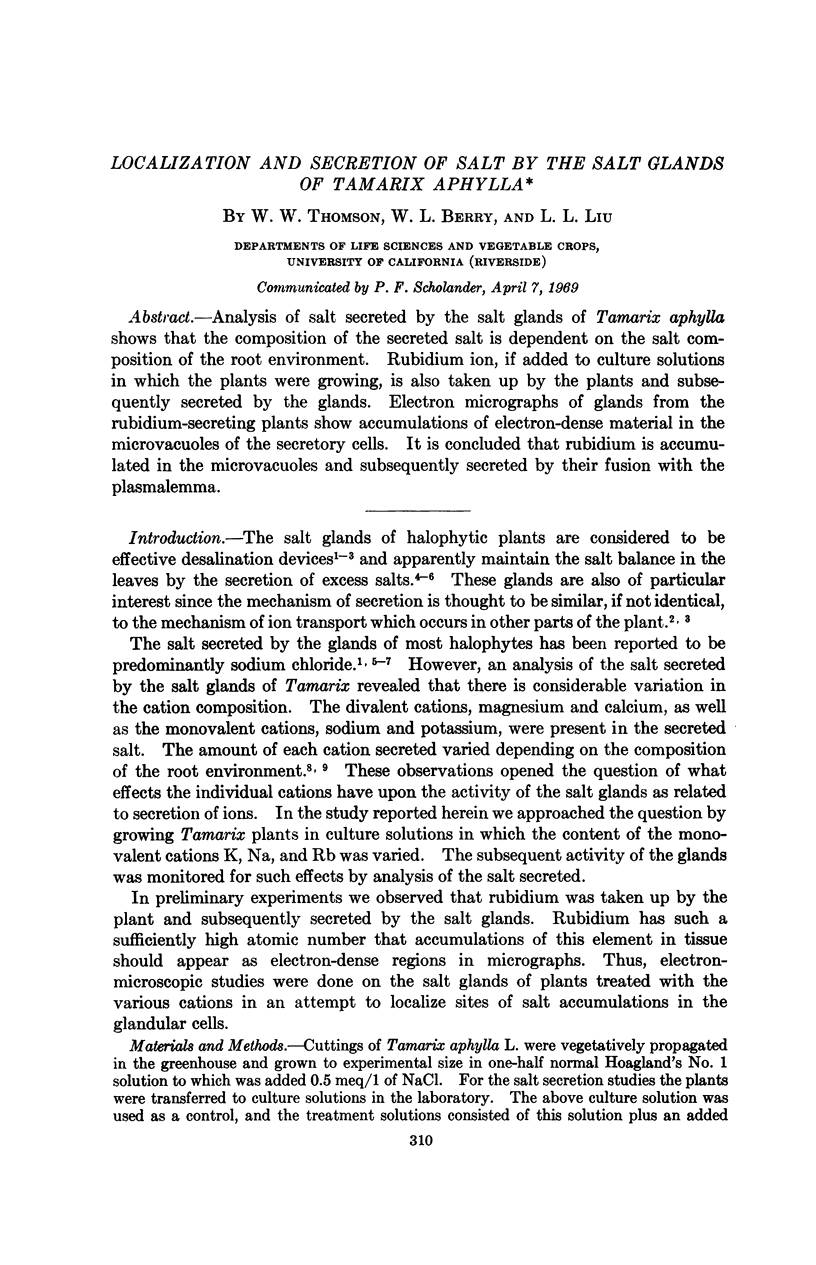
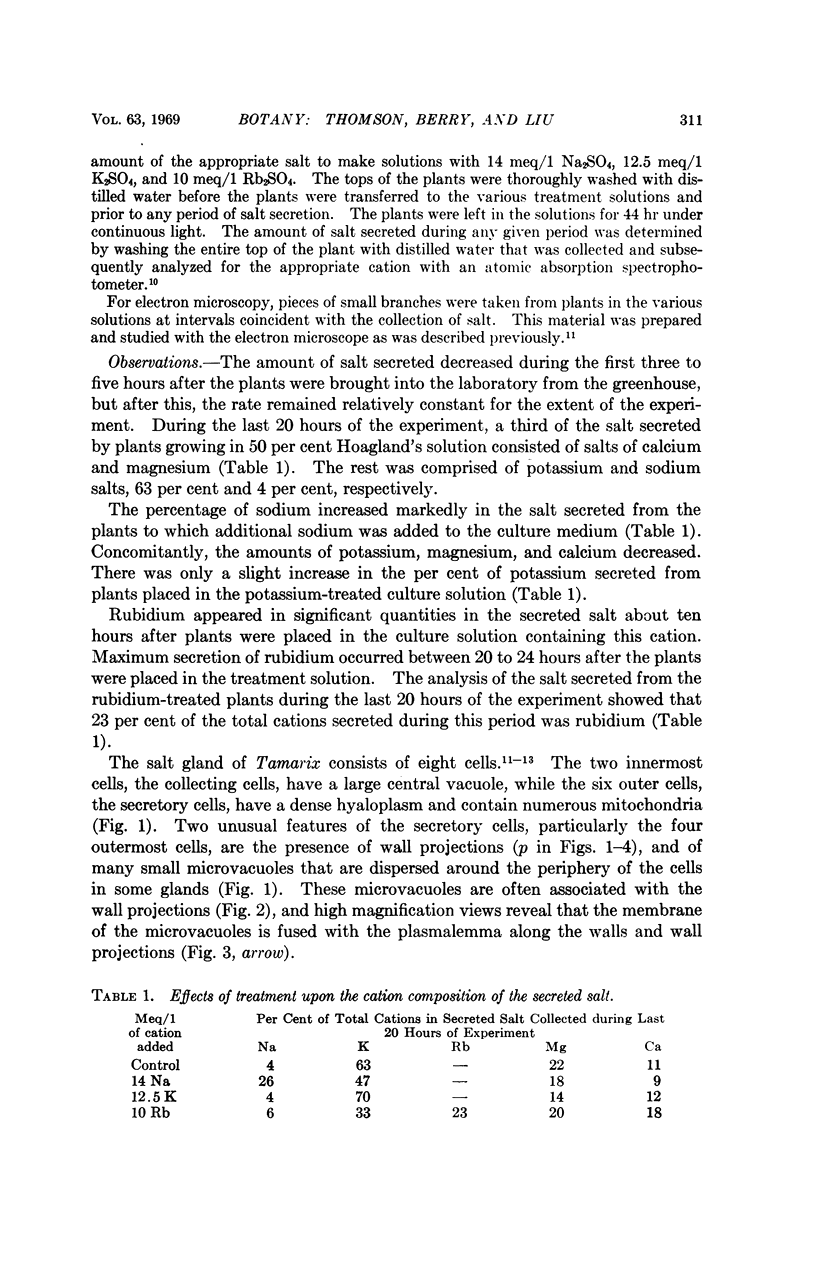

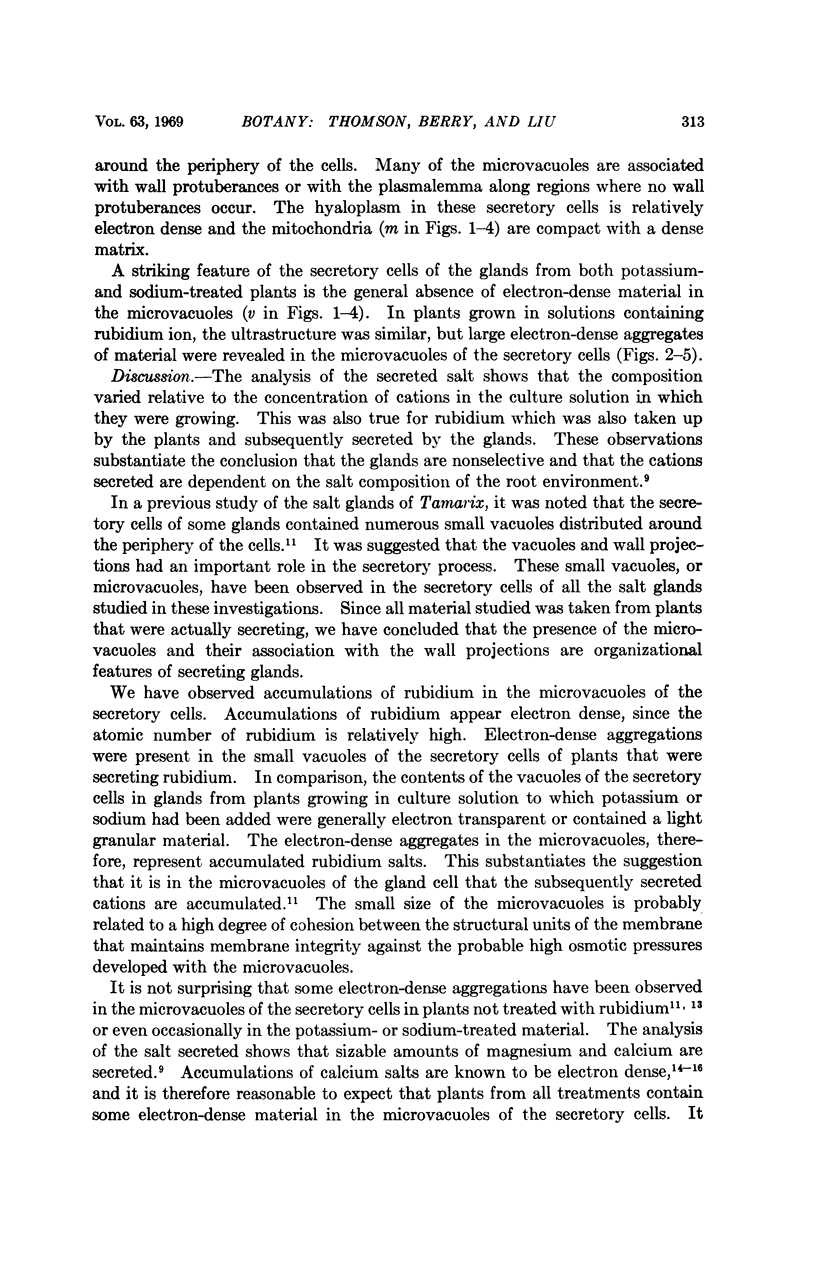
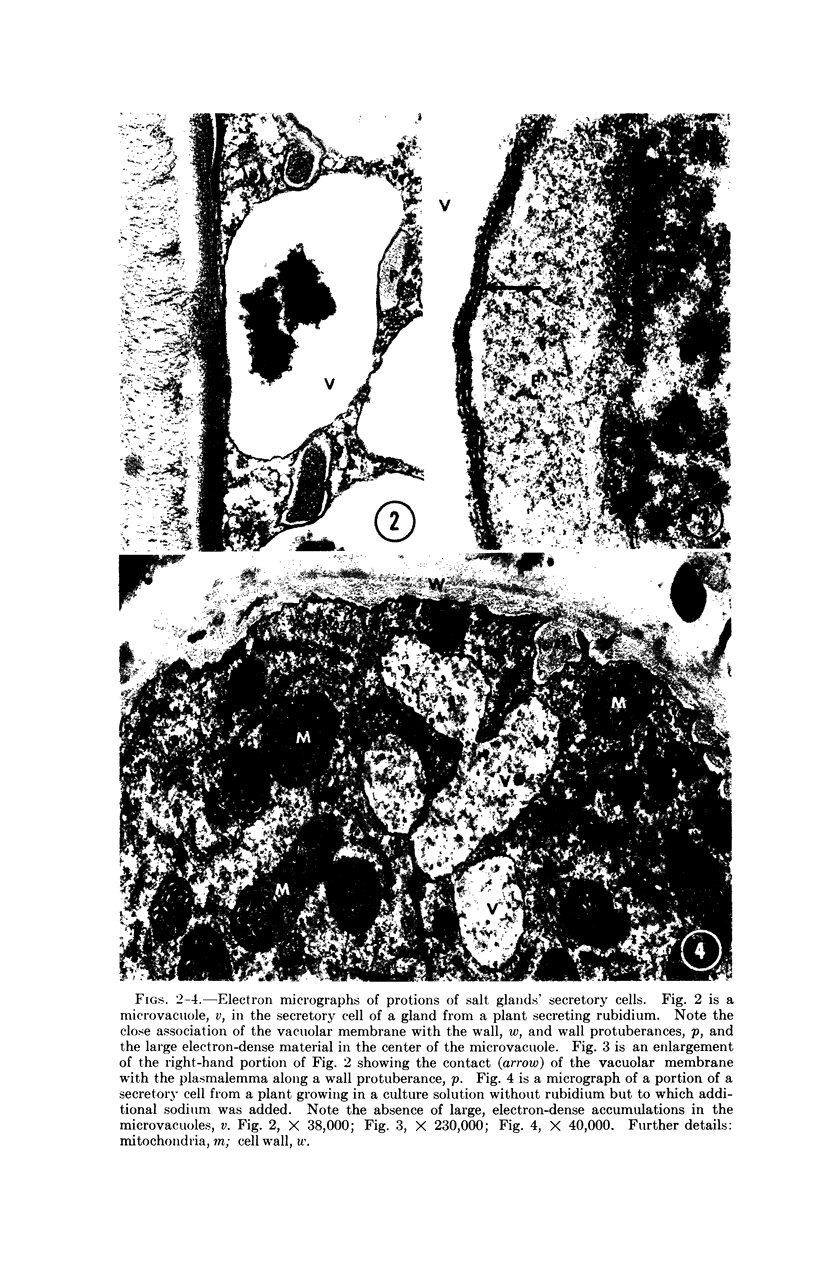
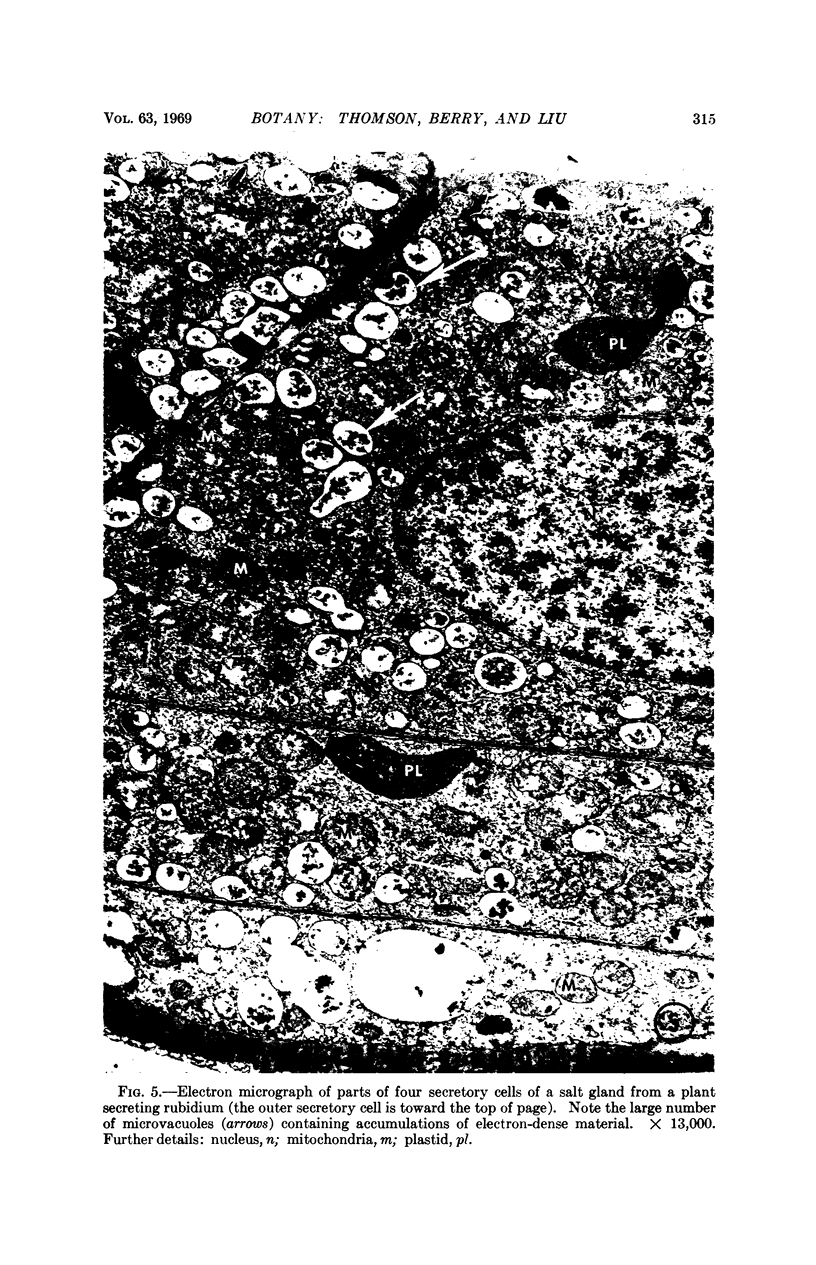
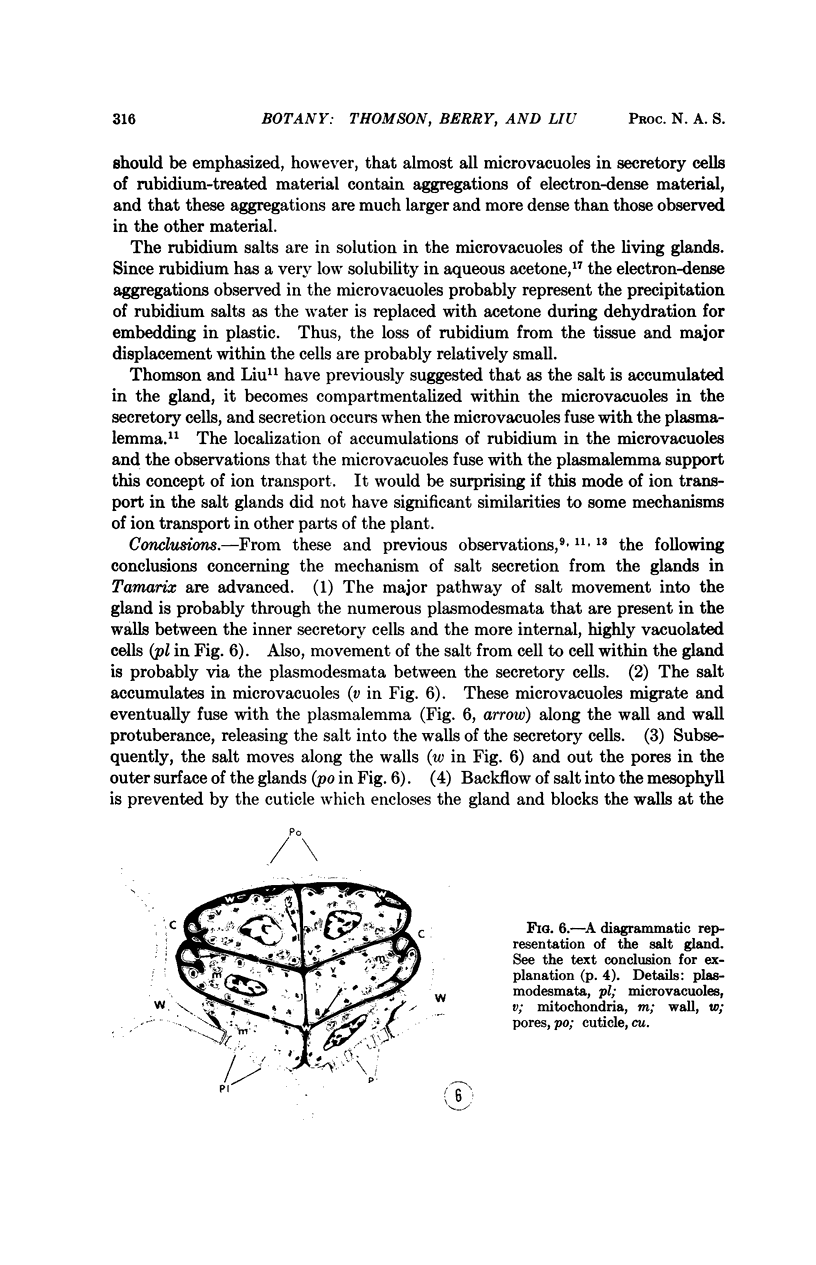
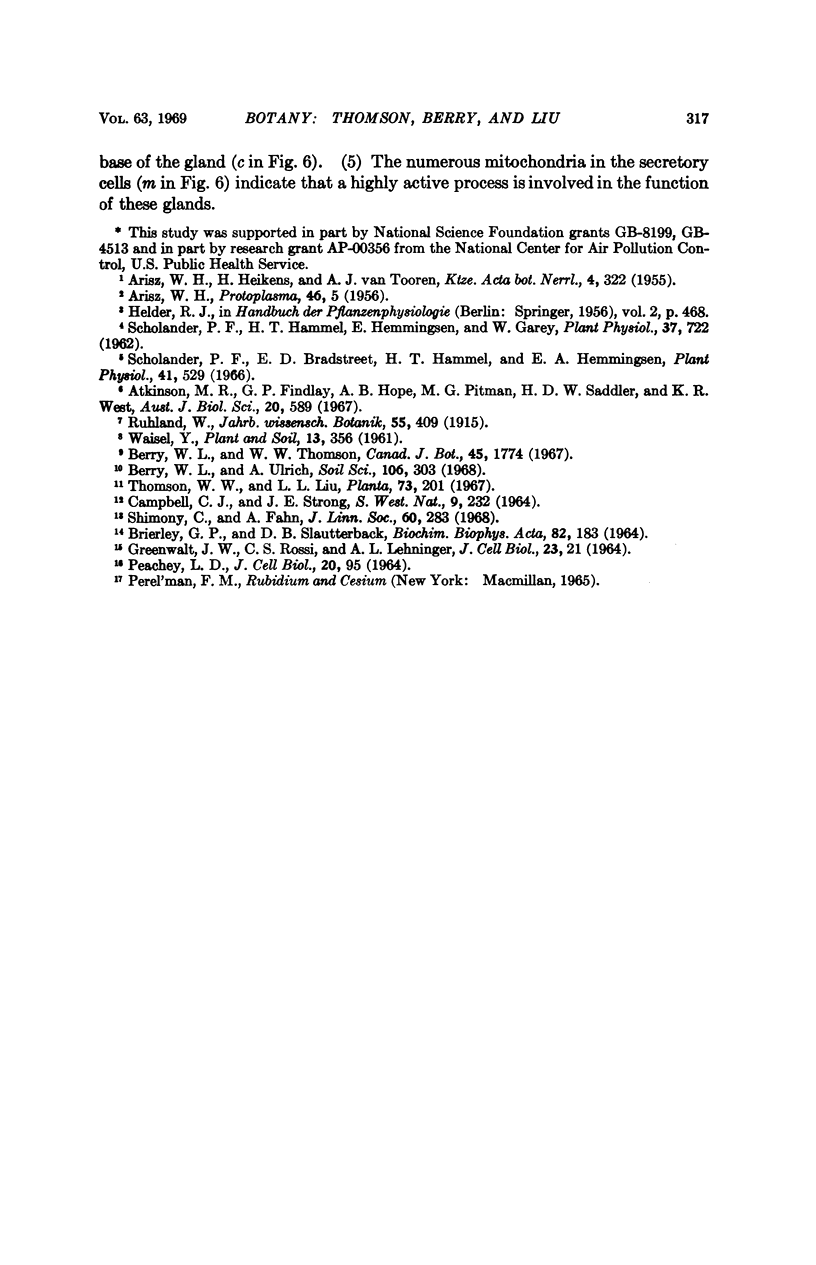
Images in this article
Selected References
These references are in PubMed. This may not be the complete list of references from this article.
- GREENAWALT J. W., ROSSI C. S., LEHNINGER A. L. EFFECT OF ACTIVE ACCUMULATION OF CALCIUM AND PHOSPHATE IONS ON THE STRUCTURE OF RAT LIVER MITOCHONDRIA. J Cell Biol. 1964 Oct;23:21–38. doi: 10.1083/jcb.23.1.21. [DOI] [PMC free article] [PubMed] [Google Scholar]
- PEACHEY L. D. ELECTRON MICROSCOPIC OBSERVATIONS ON THE ACCUMULATION OF DIVALENT CATIONS IN INTRAMITOCHONDRIAL GRANULES. J Cell Biol. 1964 Jan;20:95–111. doi: 10.1083/jcb.20.1.95. [DOI] [PMC free article] [PubMed] [Google Scholar]
- Scholander P. F., Bradstreet E. D., Hammel H. T., Hemmingsen E. A. Sap concentrations in halophytes and some other plants. Plant Physiol. 1966 Mar;41(3):529–532. doi: 10.1104/pp.41.3.529. [DOI] [PMC free article] [PubMed] [Google Scholar]
- Scholander P. F., Hammel H. T., Hemmingsen E., Garey W. Salt balance in mangroves. Plant Physiol. 1962 Nov;37(6):722–729. doi: 10.1104/pp.37.6.722. [DOI] [PMC free article] [PubMed] [Google Scholar]



